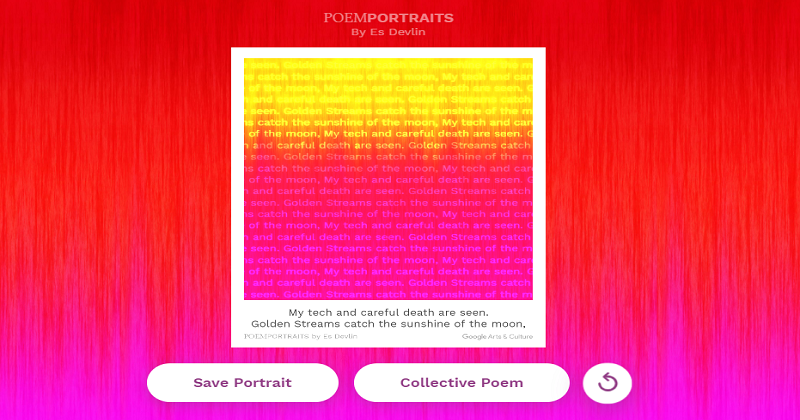Nowadays Google is helping a lot of Artificial Intelligence projects. Now Google is sponsoring an AI-based ‘poemportraits’ project. Using a poem portrait web app you can convert your face selfie into a poem portrait. Here I am writing about how to turns your face into poem portrait using Google AI-art project.
Poem portraits take the word of your proposal and consolidate it with a selfie to make the eponymous lyric portrait. Fundamentally, it’s an Instagram filter matched with a couple of lines of AI-produced poem.
Table of Contents
How To Turns Your Face Into Poem Portrait Using Google AI-Art Project
- To get started, visit the PoemPortraits project page link and follow the instructions.
- Tap the Begin button, and then enter a word in the dialogue box (the team calls it ‘donating’ a word).
- Once you click on Donate, you will be informed the AI is working on creating your poem, and then you’ll need to click Continue.
- Users then have the choice of taking a selfie (you will need to provide the requisite authorization or permission to use your device’s camera), upon which the AI-generated poem is overlaid, or they can Skip this, and just get the poem text.
- You can then choose to save the portrait as a PNG file to share as they please.
Besides making a great portrait lit up by the rushes of words, the AI-produced lyric will add to an advancing aggregate ballad that can be perused on the site in the entirety of its transient magnificence, by tapping on Collective Poem.
Watch the video of the poem portrait:
Case in point: I offered the word “tech,” and got this in return: “My tech and careful death are seen. Golden Streams catch the sunshine of the moon.”
This tool is addictive but does not work on some mobile phones. In a blog post, Google explains that the AI behind the app “works a bit like predictive text: it doesn’t copy or rework existing phrases but uses its training material to build a complex statistical model. As a result, the algorithm generates original phrases emulating the style of what it’s been trained on”.
